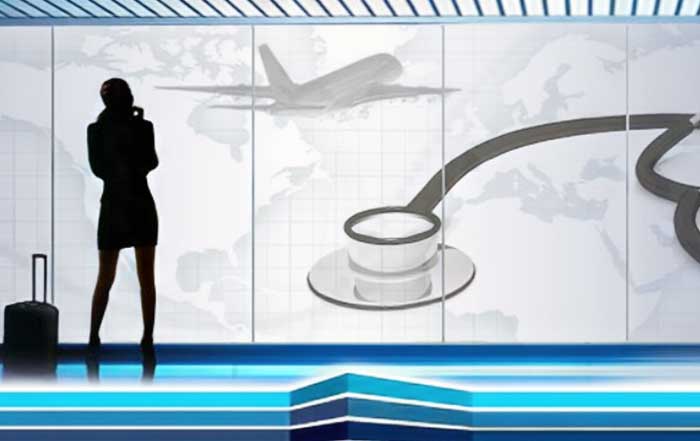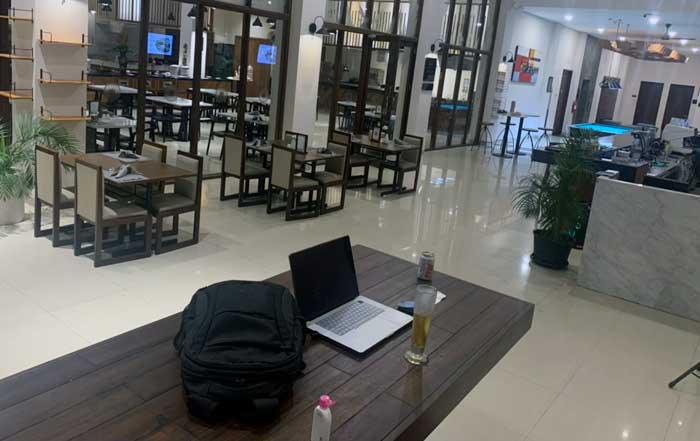Which are some of the most promising travel startups to watch in 2025, highlighting their unique offerings, the trends they embody, and their potential impact on the industry. The travel industry is on the cusp of a significant transformation as it adapts to new consumer demands, technological advancements, and a rapidly evolving marketplace. As we approach 2025, several startups are emerging as key players in this dynamic landscape, leveraging innovation to address the challenges faced by travelers and businesses alike.
The Landscape of Travel Startups
The travel startup ecosystem is characterized by a diverse array of companies that are reimagining various aspects of travel. From AI-driven solutions to sustainable practices, these startups are not only enhancing the traveler experience but also streamlining operations for businesses in the sector. The emergence of these companies reflects a broader trend towards personalization, convenience, and sustainability in travel.
Key Trends Influencing Travel Startups
Several trends are shaping the future of travel startups as they innovate to meet changing consumer preferences:
Artificial Intelligence (AI): AI is revolutionizing how travelers plan and experience their journeys. Startups are utilizing AI to offer personalized recommendations, automate customer service through chatbots, and enhance booking processes with predictive analytics.
Sustainability: With growing awareness of environmental issues, many startups are focusing on sustainable travel solutions. This includes eco-friendly accommodations, carbon offset programs, and initiatives that promote responsible tourism.
Cultural Experiences: Travelers increasingly seek authentic cultural experiences that allow them to connect with local communities. Startups that offer immersive cultural tours or unique local experiences are gaining traction.
Digital Transformation: The demand for seamless digital experiences is higher than ever. Startups are investing in user-friendly platforms that facilitate easy bookings, real-time updates, and enhanced customer engagement through mobile applications.
Notable Travel Startups for 2025
As we look ahead to 2025, several travel startups stand out for their innovative approaches and potential for growth. These companies have been recognized for their contributions to the travel industry and are poised to make a significant impact.
AncillaryBox
AncillaryBox is at the forefront of revolutionizing airline ancillary revenue models. By providing airlines with tools to optimize their ancillary services—such as baggage fees, seat upgrades, and in-flight purchases—AncillaryBox helps carriers increase profitability while enhancing customer satisfaction through tailored offerings.
Chain4travel
Chain4travel leverages blockchain technology to streamline travel booking processes. By creating a decentralized platform for transactions, it enhances transparency and security while reducing costs associated with traditional booking methods. This innovation is particularly appealing to businesses looking for efficient solutions in corporate travel management.
Eco.mio
Eco.mio focuses on sustainable corporate travel solutions. As companies increasingly prioritize sustainability in their operations, Eco.mio offers tools that help organizations reduce their carbon footprint during business trips. Their platform provides insights into eco-friendly accommodations and transportation options, enabling companies to make more responsible choices.
NomadHer
NomadHer empowers female travelers by providing resources tailored specifically for women on the go. This startup addresses safety concerns and promotes community among female travelers through curated experiences and networking opportunities. With an emphasis on inclusivity and support, NomadHer is carving out a niche in the travel market.
TripStax
TripStax enhances travel management systems with modular technology that allows businesses to customize their travel solutions based on specific needs. This flexibility makes it easier for companies to manage employee travel efficiently while ensuring compliance with corporate policies.
Turpal
Turpal utilizes smart AI systems to transform tour operations. By analyzing traveler preferences and behaviors, Turpal offers personalized tour recommendations that enhance customer satisfaction. This data-driven approach allows tour operators to create more engaging experiences that resonate with travelers' desires.
The Role of Technology in Shaping Travel Experiences
Technology plays a pivotal role in redefining how travelers interact with services and plan their journeys. As startups continue to innovate, several technological advancements are expected to dominate the landscape in 2025.
AI-Powered Personalization
AI's ability to analyze vast amounts of data enables startups to offer highly personalized experiences tailored to individual preferences. From suggesting destinations based on past travels to curating itineraries that align with specific interests, AI-driven personalization enhances customer engagement and satisfaction.
Virtual Reality (VR) and Augmented Reality (AR)
VR and AR technologies are set to transform how travelers explore destinations before making bookings. Startups are beginning to integrate these technologies into their platforms, allowing users to virtually experience locations through immersive previews. This capability not only aids decision-making but also enhances excitement around upcoming trips.
Blockchain Technology
Blockchain's potential extends beyond cryptocurrency; it offers solutions for secure transactions and data integrity within the travel sector. Startups utilizing blockchain can provide transparent loyalty programs, streamline payment processes, and enhance security for travelers' personal information.
Biometric Security Solutions
As security concerns continue to rise within the travel industry, biometric technologies such as facial recognition and fingerprint scanning are becoming more prevalent. Startups developing these solutions aim to streamline airport security processes while enhancing traveler safety.
2025 Travel Startup Innovators
Navigating Challenges in the Travel Startup Ecosystem
While the prospects for travel startups appear promising, they also face significant challenges that require strategic navigation. The competitive landscape demands continuous innovation and adaptability as consumer expectations evolve rapidly.
Funding Constraints
Despite a robust interest in travel technology innovations, funding for early-stage ventures has become increasingly competitive. Startups must demonstrate clear value propositions and scalability potential to attract investors amidst tightening capital markets.
Market Saturation
As more players enter the market with similar offerings, differentiation becomes crucial. Startups must identify unique selling points that resonate with target audiences while addressing specific pain points within the travel experience.
Regulatory Compliance
Travel startups often operate within complex regulatory frameworks that vary by region. Navigating these regulations—particularly concerning data privacy and consumer protection—requires careful planning and legal expertise.
The Future Outlook for Travel Startups
Looking ahead, the future of travel startups appears bright as they continue to innovate and adapt in response to evolving consumer needs. The integration of advanced technologies will likely lead to more seamless experiences across all stages of travel—from planning and booking to on-the-ground activities.
Emphasis on Collaboration
Collaboration among startups can foster innovation by combining strengths across different sectors within the travel industry. Partnerships between tech-driven companies and traditional players can result in enhanced service offerings that benefit both businesses and consumers alike.
Focus on Sustainability
As sustainability becomes a core value among consumers, startups prioritizing eco-friendly practices will likely thrive. By aligning business models with sustainability goals—such as reducing carbon footprints or supporting local communities—these companies can attract environmentally conscious travelers.
Continuous Innovation
To remain competitive in an ever-changing landscape, travel startups must commit themselves to continuous innovation. This includes staying abreast of emerging technologies, consumer trends, and market dynamics that shape traveler preferences.
Summary
As 2025 approaches, the landscape of travel startups is characterized by creativity, resilience, and a commitment to addressing key challenges within the industry. Companies like AncillaryBox, Chain4travel, Eco.mio, NomadHer, TripStax, and Turpal exemplify how innovation can enhance traveler experiences while driving operational efficiencies for businesses. The convergence of technology trends such as AI personalization, blockchain integration, virtual reality exploration, biometric security solutions, alongside an emphasis on sustainability will define this new era of travel entrepreneurship.
The journey ahead promises exciting developments as these startups continue pushing boundaries within an industry ripe for transformation. As they navigate challenges while embracing opportunities presented by technological advancements and changing consumer behaviors, these trailblazers will undoubtedly shape the future of travel well into 2025 and beyond.










